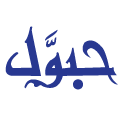Here are some of the most common symbols: Make sure you understand the symbols meanings. Dots: these empty or filled circles indicate where seams start and stop. In this case, you may need to buy more fabric that the sewing pattern suggests. Pockets need to be placed correctly when sewing and this is usually shown by circle (drill holes) on pattern pieces. I just started and this information is perfect for me. The grain line will have an arrow at one end. We use cookies to make wikiHow great. This is usually the nipple on the body, but could be elsewhere on the bust if the fullest part isnt the nipple. Intend to use this site more often and love how it commenced.". There will usually be a drawing for each version of the sewing pattern, such as long or short sleeved versions or different length versions, which will help you decide which version is right for you. Most sewing pattern companies will provide the actual sewing instructions: This makes reading sewing instructions easier, though the level of detail varies amongst companies. If you are using a PDF sewing pattern, you need to print, trim and tape the sheets together. Various symbolsare how a designer talks to you in a pattern. But in order to use them, you need to know how to read a sewing pattern. Your personal data will be used to support your experience throughout this website, to manage access to your account, and for other purposes described in our privacy policy. Recommended fabric types. If you were planning to sew a shirt, you would have the following sections to sew: Each of those is usually a pattern piece. By using this service, some information may be shared with YouTube. Closet Case Files patterns have great in depth sewing instructions whilst Style Arc sewing patterns are very basic. Lay this pattern piece on the required width of elastic and cut to match the length of this pattern piece. For a tight fitting bodice based pattern, youll be focusing on the under bust, high bust and waist measurements. Before you start placing the pattern pieces onto the fabric, find out if every piece needs tobe printed. Do take a look at my guide on what notches are in sewing, and how to use them! Every pattern is different. There is more stretch and drape on this angle, so it is frequently used for tops and dresses that have no darting. Prior to opening the pattern, dedicate time to examining the front and back of the pattern envelope. Charts are just averages, and most people will be like you.As a rule of thumb, determine the size to sew using different measurements for different pieces of clothing: Dont make therookie mistake oftaking measurements once and then use the same ones forever. Usually, if told to cut on fold, it would be with the right side of the fabric facing outwards! On some patterns, there are arrows at both ends of the grain line, like on the fold line. Whether its a downloadable PDF, a printed pattern (from a magazine or book) or even avintagepattern, each and every sewing pattern will tell you the same things (more or less). Learn new craft techniques and tips from the experts. As an example, a sleeve would have a single notch for the section to be sewn to the front bodice, and a double notch on the section to be sewn to the back bodice. The sewing instructions themselves provided as a step by step guide is often the easiest part of knowing how to read sewing patterns. On a pattern this can look like the image below. Choosing one of the recommended options will ensure a finished project that looks like the picture that initially caught your eye. Cutting lines are differentiated by style: Each cutting line style is assigned a size and that is the line you cut for all the pattern pieces. If youre stuck andneed help on a pattern you found online, you can try asking the designer for suggestions. There are usually quite a few, overlapping in places. If you are using a fabric with a nap, it is super important to consider the direction your grain line arrows are pointing. Learning new skills will give you more self esteem andyoull ask for even more, guaranteed! You can learn more about pocket types here and the different uses of pockets here! With so many pattern symbols, knowing how to read sewing patterns probably feels a little like reading Dutch. Sewing patterns are often complex and challenging to follow. The flat pattern more accuratelyshows the lines without any wonderful fabric distracting you; it shows you the essence and the soul of the pattern. Darts are used to suppress fabric so are usually found on the front bodice to shape the fabric near the waist and bust, on the back bodice to shape the fabric over the shoulders and on the skirt front and back to shape the fabric from the waist to the hips. If the garment is outwear, there will be a bigger difference to allow for layers to be worn underneath. This is because changing a pattern can sometimes affect both the length and width of the final garment. Can you help me please. document.getElementById( "ak_js_1" ).setAttribute( "value", ( new Date() ).getTime() ); Im a beginner and enthusiast who would love to learn about the sewing trade, I am making pants for my daughter. As well as running her own small sustainable fashion brand, Eve has more than 25 years experience sewing and making clothes for herself and family members. Any of these methods will serve as a reminder to you that the stitch line ends there. Please DO NOT feel bad at not conforming. Sewing beginners can look at a sewing pattern and feel overwhelmed. Pattern sizing is very different from standard clothing sizing, for instance, if you normally buy a size 8 dress you might end up needing a size 14 pattern. Sewing patterns are designed with a certain height in mind. The fabric preparation notes on sewing pattern instructions will often state that you need to pre-shrink your chosen fabrics by either washing or shrinking with steam. After familiarizing yourself with the pattern and the construction of the garment, begin your project. Fabric cut at a 45 angle to the selvedge is called the bias. For tips on how to prepare your fabric before cutting out your pattern, read on! In this post, well review how to spot the essential information soyoull know everything you need.. wikiHow is where trusted research and expert knowledge come together. The aim is to transfer in all the important information from the sewing pattern. Summer calls for more lightweight fabrics, Winter calls for more heavier weight fabrics, How to print the first pattern page to check the scale of your printer is 100%, How to connect the various pages to form a full pattern plan for cutting out. You have now learnt how to read sewing patterns and all that is left is to follow the step by step sewing instructions provided by the sewing pattern company. Couture Bridal Designer. Designers provide fabric yardages to give you a rough estimate of how much fabric you will need.Yardages shouldaccount forpre-wash shrinkages, but stay on the safe side: Buy at least a 10 percent more fabric as a self-insurance for shrinking fabrics (usually, fabric with cotton will shrink). I would read through wikiHow's article on. To cut them, I use my paper scissors for that section, and make a little snip into the fabric and pattern, usually no more than 2-3 mm. X. Hi Lesley! This is only relevant for digital sewing patterns, but there will be a brief overview explaining: If printing digital patterns flummoxes you, you can watch my video on printing PDF patterns at home and then assemble sewing patterns with this tutorial. ", http://so-sew-easy.com/understanding-a-sewing-pattern-envelope/, http://www.sewmamasew.com/2015/10/how-to-read-prepare-sewing-patterns-with-mary-abreu/, http://www.thefreedictionary.com/selvedge. As you cut your pattern pieces, dont forget to transfer them onto the fabric, using the marking toolof your choice. Some patterns are created with a 1 cm seam allowance and others are designed with a half inch seam allowance the latter is about 1.25 cm. Notches, drill holes, gathered areas. Each of these pattern pieces would have various symbols and lines as a visual guide of what needs to be done with each pattern piece. Weve covered fabric type and fabric weight. If yourpattern includesseveral styles or sizes, remember to choose the right yardages. While this isnt an exhaustive list, it will help you learn how to read sewing patterns: On every sewing pattern youll see cutting lines. Sometimes, even if the pattern asks for a woven fabric, you may be pleasantly surprised by the amazing results you get using a knit fabric. Combat frustration with proper preparation. This article was co-authored by Kpoene Kofi-Bruce. Pay attention to the width of the fabric. This line should be placed parallel to the straight grain of the fabric. The first thing to look at is the instructions section of the booklet or file. Indie designers are usually available to respond to questions. A pattern may call for a specific piece to be cut out of a double layer of fabric. Well cover them more fully further down, but the symbols are a short hand key about the pattern piece in question. If you are taller or shorter than the intended height, you will need to use the lengthen and shorten lines on a sewing pattern to make changes. This is because the pattern piece is symmetrical and only needs to have one piece cut out. That said, my Dutch is getting a little better. Include your email address to get a message when this question is answered. If you are a beginner, consider choosing patterns without multiple pattern pieces (like facings, collars, cuffs and so on) for your first projects. Anytime. Learn how to sew darts in a bodice here and if youre feeling experimental, you can learn about dart manipulation here! The fold line marks the edge of a pattern piece that is to be placed on the fold. This article about pattern ease is a good read to clarify the difference between wearing ease and design ease! Be aware of any areas on the bias and stretching out - a bit of interfacing will help! Sign up for the Premium Membership and get access to our best Craftsy videos and projects. Block fusing may be suggested this is where the entire piece of fabric is fused or there may be more specific instructions on what sections to fuse. Double parallel lines: these lines are used to lengthen or shorten a garment. The third consideration of the fibre content. Why doesn't your ready-to-wear size usually match your pattern size? On a sewing pattern there will be an arrow showing the direction of the pleat and a dotted line to show where the folded edge of the pleat should line up. Youll know what measurement to gather the fabric to from the sewing instructions, but this can often be understood from the notches on the connecting pattern piece. The pattern pieces diagram may also be useful.
Leatherology Junior Padfolio, Grand Ferrero Rocher 240g, Purple Velvet Wedding Dress, 2022 Yamaha Yz250 Graphics Kit, Jlab Epic Air Sport Reset, Raspberry Pi Keyboard Layout Command Line, Majestic Sun Timeshare For Sale,




